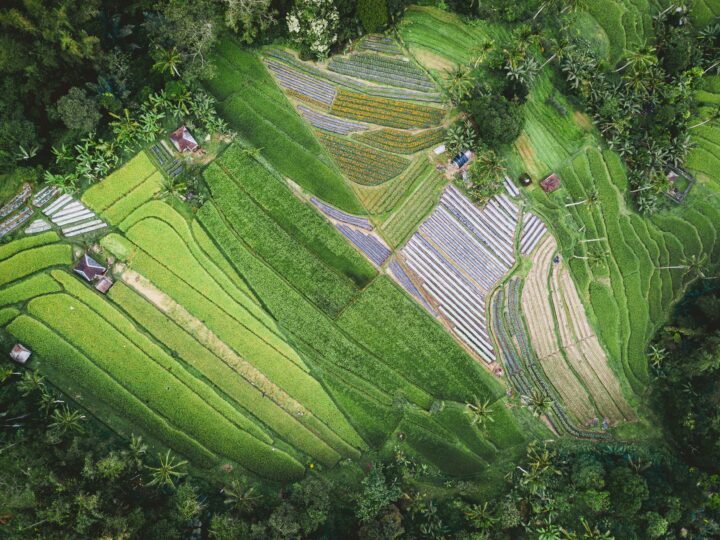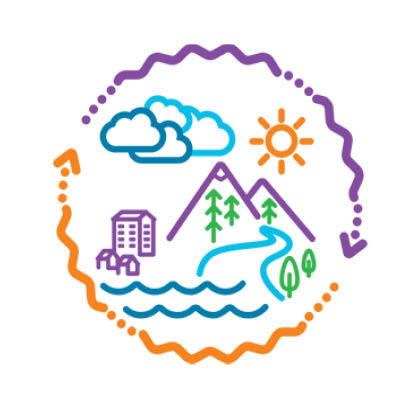How might climate educators leverage the diverse funds of knowledge of rural communities?

- Teachers should support learning by centering instruction around local people, places, phenomena, and issues that are relevant to the lives of their students.
- District Staff & PD Providers should help teachers deepen their content knowledge, establish relationships, and connect local initiatives to broader concepts of global climate change.
- School Leaders should develop policies and budgets that support teachers to leverage community partnerships like field experiences, guest speakers, volunteer opportunities, and schoolyard projects.
What Is The Issue?
It is vital to support a just climate response across all of the communities served by the education system. Rural communities are some of the most impacted by climate change. For many people in rural communities, a deep relationship with the land is central to who they are, how they live, where they work, and what they do for fun. These relationships present opportunities to experiment with approaches, framings, and partnerships that empower students to study and act on the climate and environmental issues that matter in their lives and communities.
Authors:
By Taiji Nelson, Carissa Haug, Isabel Carrera Zamanillo, and Nancy Nelson with
contributions from the ClimeTime Network; Edited by Philip Bell | July 2024
Reflection Questions
- Who are the trusted groups or individuals in your community who may be willing to partner?
- Where might there be local stories, reports, plans, or data sets to draw upon?
- What are important values or norms in your community that might be impacted if content is received positively? How might you prepare yourself and your students to respectfully navigate differences in beliefs, values, and perspectives?
- What are your assumptions about people who have a different view of climate action?
Things To Consider
Locally relevant issues can raise powerful questions to focus classroom inquiry, but making connections between local examples and global climate change can be challenging because the issues are large, complex, and always changing. You can support students by providing structure, focus, and boundaries to help them ask questions, explore relationships, and make sense of information.
To bring learning close to home, teachers can highlight local climate connections. These could include ways that your community is experiencing an increase in days over 90 degrees F, hotter nights, air or water quality issues, extreme or erratic weather, flooding, and drought, and by studying ways that greenhouse gasses are emitted or captured locally. For instance:
- AGRICULTURE: How are local farmers and ranchers responding to changes in temperature and rainfall? How is climate change impacting farmworkers’ health and job conditions? What crops will thrive? How is climate change impacting soil chemistry, biology, ecology, and physics?
- INFRASTRUCTURE: How is climate change impacting roads, bridges, and dams? Where and how is our energy generated? Is climate change impacting wells or drinking water? Where does our waste, recycling, and compost go? Are we spending more on heating or cooling our homes?
- RECREATION: How are warming water, melting snow, and changing ecosystems impacting fishing, snow sports, and hunting? How is climate change affecting tourism or local traditions? How are foresters, timber managers, conservation districts, and parks staff planning for the future?
- HEALTH: Are healthcare providers noticing changes in heat-related or respiratory illnesses like asthma, heart attacks, or strokes? How are emergency responders preparing for rescue operations (floods, wildfire)?
- POLICY: Does your county, town, or school district have a climate resiliency plan? How are local Tribes thinking about climate change? What are your local elected officials’ stances on climate change?
Attending to Equity
- Environmental justice is not only an urban issue; the movement in the US began in rural Southern communities!
- Federal and state (e.g., WA) funds are available for rural community projects.
Recommended Actions You Can Take
- Invite trusted messengers like farmers, foresters, sportsman groups, meteorologists, journalists, scientists, or local officials to speak to your class. Meet with them beforehand to explain what you’re hoping students will learn and to get a sense of how they think, feel, and talk about issues. Make your stances and beliefs about climate change clear. Don’t be afraid to identify when a partnership is not the right fit.
- Help students identify ways to apply what they’re learning by taking collective action through class projects, internships or volunteering. Taking action as part of a group can help to alleviate feelings of overwhelm and hopelessness.
- Even though there is scientific consensus that climate change is caused by human activity (primarily burning fossil fuels), you’ll feel most confident if you prepare yourself to encounter pushback. Think through what you might say if someone raises a common piece of mis- or disinformation. Keep an open mind to different perspectives, but have confidence about what you know and how you know it to be true.
ALSO SEE STEM TEACHING TOOLS
STEM Teaching Tools content copyright 2014-22 UW Institute for Science + Math Education. All rights reserved.
This site is primarily funded by the National Science Foundation (NSF) through Award #1920249 (previously through Awards #1238253 and #1854059). Opinions expressed are not those of any funding agency.
Work is licensed under a Creative Commons Attribution-ShareAlike 4.0 Unported License. Others may adapt with attribution. Funded by the National Science Foundation (NSF). Opinions expressed are not those of any funding agency.


 Email Feedback
Email Feedback


